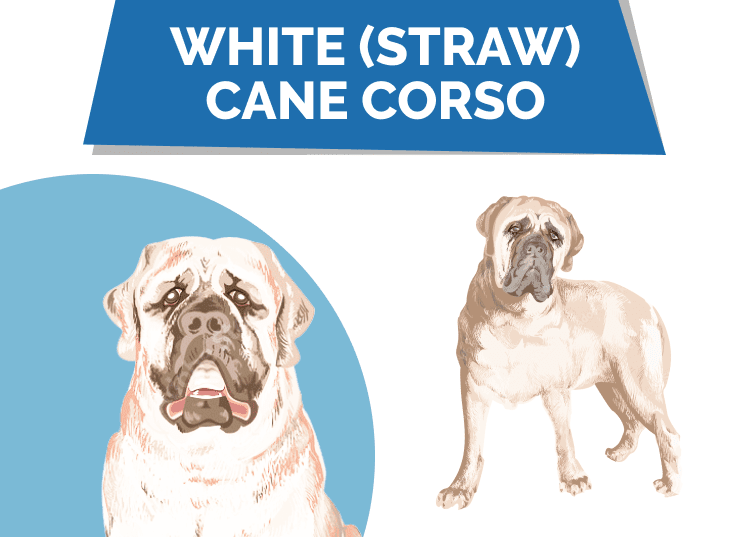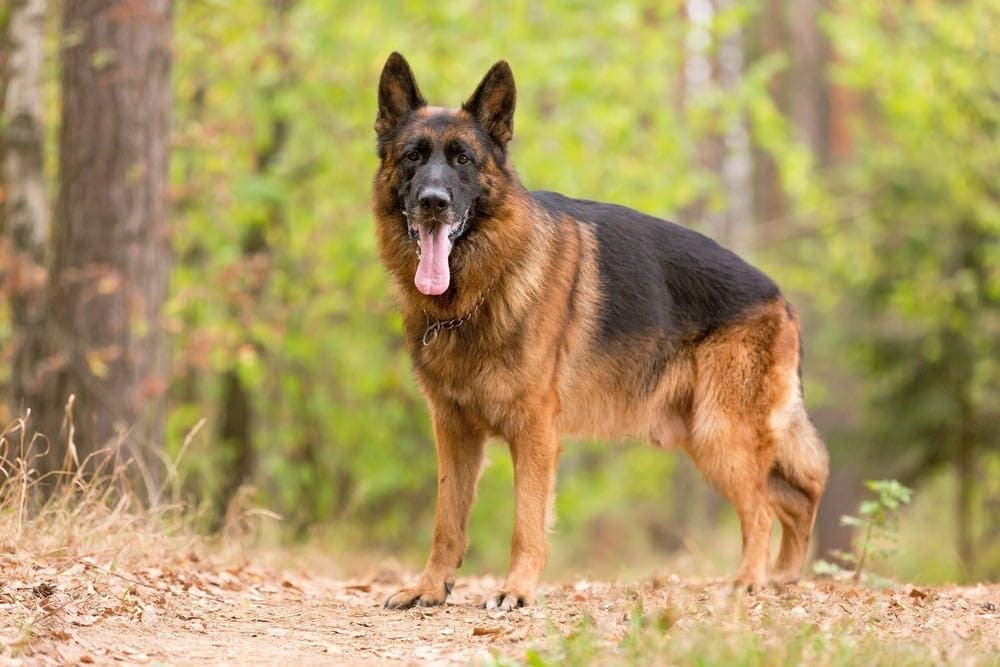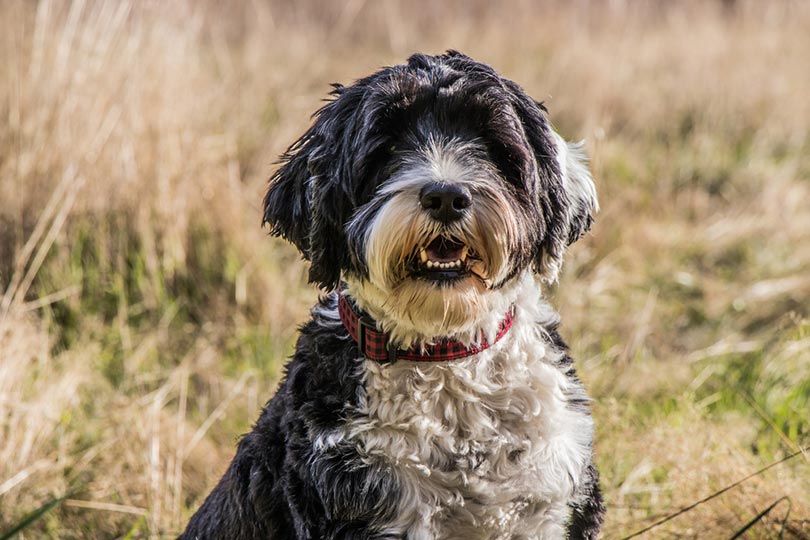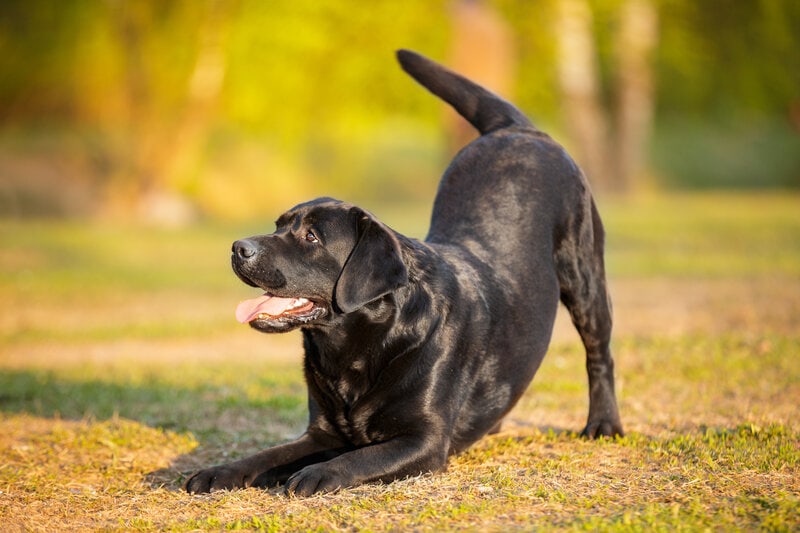White Cane Corso (Straw Cane Corso): Pictures, Facts & History
By Kit Copson
Updated on

When it comes to coat color in the dog world, there are standards and there are exceptions that stir intrigue and fire up debate among breeders and experts. One of these exceptions is the white—also known as “straw”— Cane Corso. Often claimed by breeders to be “rare” and very striking to boot, the straw Cane Corso is often mistaken as completely white, but this isn’t the case.
The straw color is in fact a shade of cream or light yellow, and some enthusiasts even consider it a very pale shade of fawn, which is an American Kennel Club standard color for Cane Corsos. On the other hand, some don’t think it fits the breed standard in any way. The straw Cane Corso does not have a mask.
If you’re hooked by the straw Cane Corso and would like to know more about the breed’s history and how the straw color came to be, you’ve come to the right place. Let’s dive in.
The Earliest Records of the White Cane Corso in History
The Cane Corso as we know it today is the descendant of Roman Mastiff-type dogs also known as molossus dogs. The Romans returned from the Greek islands with these Mastiffs and developed them as fighter dogs.
The Cano Corso’s ancestors were tasked with a very daring mission—carrying receptacles containing burning oil on their backs over enemy lines during battle. Once they were no longer needed for war purposes, the Cane Corso’s ancestors protected property, performed various jobs on farms, and worked as hunters.
As for the straw/white Cane Corso, it’s possible that they came about as the result of breeding with either the Maremma Sheepdog or the Abruzzese Sheepdog. It’s not clear when exactly this development occurred, but straw Cane Corsos were once very popular on Southern Italian farms.
The straw Cane Corso’s name in Italian is “cane da pagliaio”, which translates to “straw-stack dog”.
How the White Cane Corso Gained Popularity
Historically, Cane Corsos were considered excellent multi-purpose dogs that could handle a wide variety of jobs and tasks. This versatility made them popular working dogs after Rome fell during the fifth century.
Their popularity started to dip sometime before the mid-twentieth century due to farmers’ growing reliance on machines and these once-valued dogs began to disappear, but enthusiasts started work on reviving the breed in the 1970s.
In the case of the straw Cane Corso, the straw color was popular on Italian farms because, as Dr. Flavio Bruno explains in his book II Cane Corso (1994), it was once believed that straw-colored dogs matched real straw in having a “flammable” temperament.
Formal Recognition of the White Cane Corso
Though the American Kennel Club recognized the Cane Corso in 2010, straw is not listed as a standard coat color for this breed. Colors accepted as standard are black, gray, gray brindle, red, black brindle, chestnut brindle, and fawn. As mentioned in the introduction, some consider the Cane Corso’s white/straw color to be a shade of fawn, but others disagree.
On the other hand, the American Kennel Club does not expressly disqualify straw Cane Corsos in its breed standard—only tan pattern markings are subject to disqualification as per the standard. That said, straw is commonly referred to as a non-standard color in various pieces of literature about the breed.
Top 3 Unique Facts About the White Cane Corso
1. Cane Corsos Were Once Straw-Stack Guardians
When working on Italian farms, one of the Cane Corso’s tasks was to watch over straw stacks. Though Cane Corsos in any color could do this, straw was the most popular Cane Corso color at the time.
2. Cane Corsos Once Helped Castrate Bulls
The Cane Corso’s farm jobs were incredibly versatile. They were often used to grip and hold onto bulls while they were castrated. They were also tasked with preventing sows from attacking the farmer while they collected the piglets.
3. The Cane Corso’s Ancestors Were Called “Pireferi”
The Romans gave Cane Corsos this name about their military service which was spent charging the enemy with buckets full of burning oil secured on their backs.
Does a White Cane Corso Make a Good Pet?
Despite having a somewhat imposing presence, a well-trained and socialized Cane Corso can make a fantastic companion dog that offers nothing but pure love and loyalty to the right people. Cane Corsos also make great watchdogs and are likely to be very protective of the people they love. They are better suited to more practiced hands, mind you, as they’re very confident, highly intelligent, and assertive.
While these are great qualities, if paired with an inexperienced dog owner, the powerful Cane Corso can start causing trouble by establishing themself instead of you as the pack leader. If you decide to welcome a Cane Corso into your life, it’s a great idea to attend obedience classes to start as you mean to go on.
Moreover, the Cane Corso is likely best suited to a family with older children with an understanding of boundaries and who are less likely to be accidentally knocked over by the Cane Corso’s big frame.
Conclusion
Cane Corsos of all colors have a long and fascinating history that dates back to the Roman era. Many of the qualities the Romans prized in this courageous and protective canine were later valued on Italian farms in particular, where the straw-colored Cane Corso was especially favored.
Though the white/straw Cane Corso has been the subject of much debate in the dog community, their best traits are still held in very high esteem today. Though fearless, confident, and dignified, the Cane Corso is never too proud to hop up on their favorite person’s lap for a cuddle.
Featured Image Credit: You are free to use this image but we do require you to link back to hepper.com for credit










